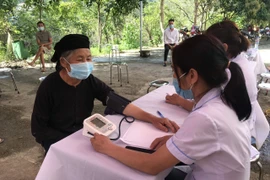Hanoi (VNA) - Over the past time, the Vietnamese Party and State have set forth many priority guidelines and policies to ensure sustainable development in the mountainous and ethnic-inhabited regions, with a special emphasis on the role of science and technology.
As a result, many national programmes to this effect in those regions have brought about practical economic benefits.
Deputy Minister of Science and Technology Nguyen Hoang Giang said that the Rural and Mountainous Region Programme for the 2016-2025 period has created a spotlight in the application of science and technology in production, thus bringing about substantive socio-economic efficiency for those areas. The programme has made an important contribution to the building of agriculture towards large commodity production, as well as the implementation of sustainable socio-economic development programmes of localities.
In order to develop the ethnic-inhabited areas, Minister of Science and Technology Huynh Thanh Dat stated that science and technology must be a solution to create a new breath of life into agro-forestry production.
The National Science and Technology Programme for 2016-2020 has achieved success, with many of its results promptly transferred, he added.
By the end of June, 51 national science and technology tasks under the programme had been implemented, with a total budget of 176 billion VND (7.7 million USD). In the 2016-2020 period only, the programme built 30 value chain-linked production models, 14 information technology application models, and 27 models of high-tech application in production; and made 1,106 transfers of new technologies to ethnic minority and mountainous areas in 34 provinces and cities, thus contributing to promoting socio-economic development there.
In July, the Ministry of Science and Technology and the Government Committee for Ethnic Minority Affairs signed a joint action programme for 2021-2030 in order to promote the transfer of technologies, especially new scientific and technological advances, that are suitable to the characteristics of the mountainous and ethnic-inhabited areas so as to serve sustainable socio-economic development and poverty reduction./.






























